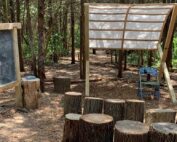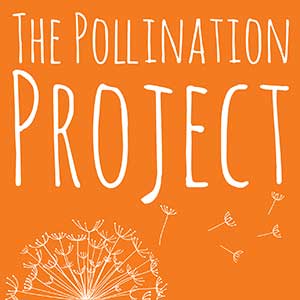According to Waliczek et al. (2016), with the American Society for Horticultural Science, “Food waste is one of the most abundant materials contributing to landfills in the United States” (Waliczek et al., 2016). It is estimated that over 90% of our food waste is returned to landfills (FAO, 2013). This waste generates greenhouse gasses which ultimately interact with global climate change. Specifically, the Food and Agriculture Organization of the United Nations reports that this waste contributes to an additional release of 3.3 billion tons of greenhouse gasses (FAO, 2013). When students are educated about these concepts, studies show that their long-term understanding of composting increases, their scientific disciplinary literacy increases, and their attitudes towards the environment improve as well (Waliczek et al., 2016). These factors alone give reason to include lessons on composting within the classroom.
Part II: What is Composting?
Composting is a part of the natural life cycle of plants and animals. When we talk about composting, however, in society’s vernacular, we are typically referring to the human-facilitated solid waste management of organic materials (Cornell Waste Management Institute, 2009). Typically, people encourage the composting of organic materials by developing a compost pile, or establishing a compost system that uses red wiggler worms to aid in the composting process (Department of General Services, n.d.). In either system, living organisms work to break down the organic material. When people build these piles, they are creating the ideal living environment for microorganisms to thrive to break down the organic waste. Composting occurs when brown materials (dead leaves and decomposing tree trimmings), green materials (fruit and vegetable waste and live yard waste), and water interact, as shown in Figure 1 (Organics Recycling Program, n.d.).
Figure 1
Composting Process Imagery

With the assistance of bacteria and other microorganisms, these materials eventually break down to form the compost, a material that resembles dirt. If worms are used, the worms digest the organic material, and the waste that they produce is used as the compost. While this is a simplified explanation of the process, students could do a much more thorough investigation into the chemical processes that are occurring when materials decompose. For this reason, lessons on composting at home, in the classroom, or in the community can be adapted to meet the needs of almost any learner.
Part III: Advanced Content Curriculum
Although students will be able to reach a practical level of understanding through lessons on composting, in order to best educate regarding this topic, it may be desirable for the educator to dive deeper into the content area. Specifically, the concept of utilizing earthworms to aid in the composting process, otherwise known as vermicomposting, can act as a way to connect student understanding of environmental biology to student background knowledge. Alternatively, when earthworms are specially utilized to decompose environmental pollutants, this process is known as vermiremediation (Grasserova et al., 2020). Both vermicomposting and vermiremediation are processes that are actively being researched as approachable mitigation techniques that can help decrease the human impact on the climate crisis. With this knowledge, teaching students about these processes could open the door to potential careers researching in the fields of sustainability, environmental biology, and ecology. Without a doubt, the potential to use composting for potential climate harm reduction or community benefit is substantial.










